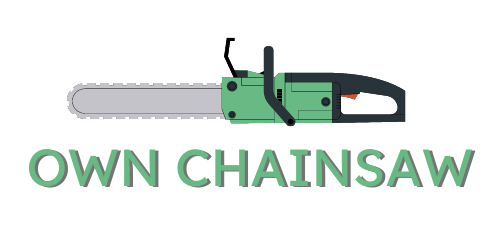Chainsaws! Just the name can make you think of horror movies and bad dreams. They’re loud, powerful, and downright dangerous. But here’s the thing: that doesn’t mean you should never use one.
If you’re a homeowner or professional who needs to cut down some trees or prune some branches, you’re probably going to need a chainsaw.
But Are Chainsaws Dangerous? Yes, they can be dangerous if not used properly. With sharp blades and fast speeds, chainsaws can easily cause serious injury if the user is not careful.
The most common cause of injury from chainsaws include kickback, pushback, pull-in, etc.
So, it is important to understand the risks associated with operating a chainsaw and to take the necessary precautions to ensure safety. In this blog post, we will explore the potential dangers of chainsaws and provide safety tips to help you stay safe while using one.
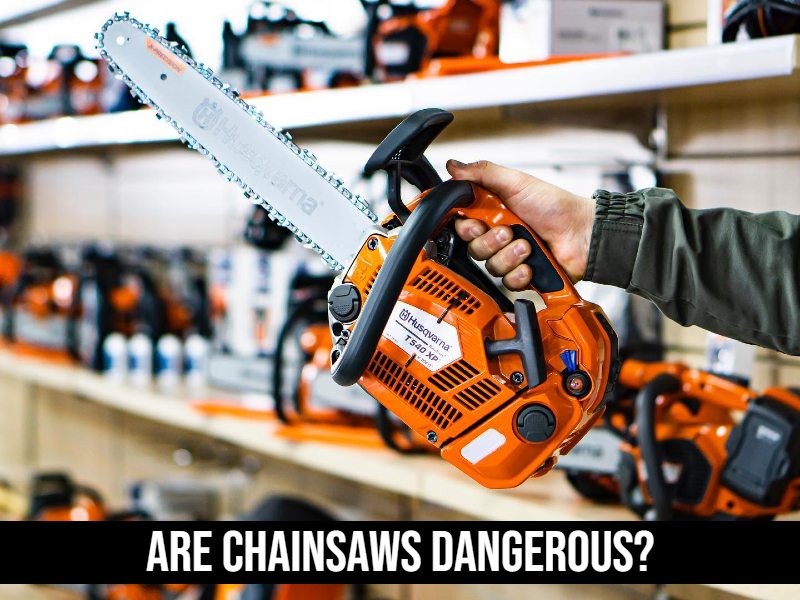
Why are Chainsaws dangerous for users?
Chainsaws are incredibly powerful tools, and with that power comes a certain level of danger. High-speed chains with sharp blades can be hazardous if not used correctly.
A swiftly moving blade can inflict lethal wounds, and every year, chainsaw accidents cause around 40,000 injuries.
Here, we discuss the specific dangers of chainsaws and how to use them safely.
1. Kick Back
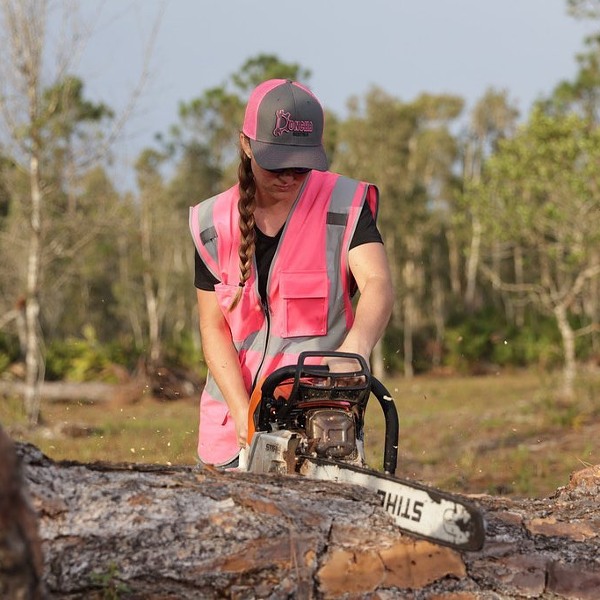
Kickback is a dangerous phenomenon that can occur when using a chainsaw. Kickback happens when the chain saw’s guide bar or chain is suddenly forced backward and upwards, toward the user. This can happen when the chain’s tip touches an object and sticks, causing the saw to jerk back, potentially causing serious injury to the user.
When a chainsaw encounters a hard surface or metal, it can cause the saw to bounce back with a force that is opposite the direction of the user’s face. If the user is careless, this could result in severe harm or even death.
The chain of a modern chainsaw will not rotate if a kickback occurs due to a kickback guard. Whenever you operate a chainsaw, you should always use this safety feature. You could still fall over or be smacked in the face even if the chain isn’t moving.
To stay safe, the user should always wear protective gear such as gloves, goggles, a helmet, and other safety apparel. Keeping the body to the side of the saw, rather than directly in line with the saw, can also help prevent kickback.
You can see the PubMed research on different cases due to the kickback problems in chainsaws.
2. Pushback and pull-in
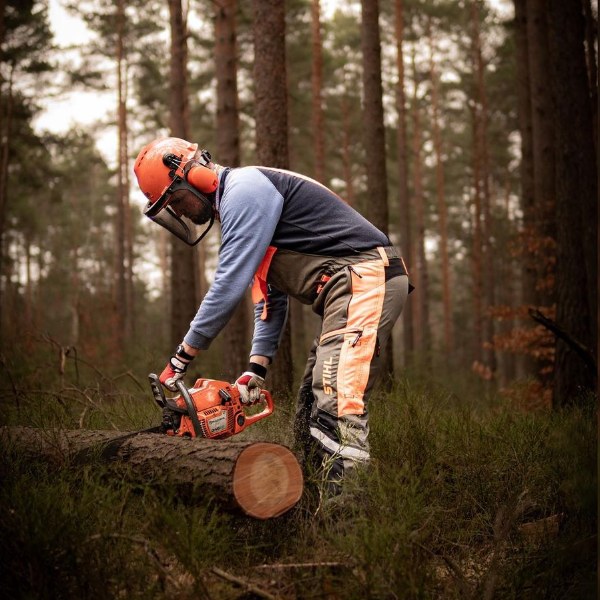
Pushback and pull-in are serious dangers from chainsaws for users. Pushback occurs when the chainsaw blade is suddenly stopped by the object being cut and the saw is thrown back toward the user.
Pull-in occurs when the lower end of the chainsaw has made contact with the object being cut, causing the upper end to be drawn toward the object.
This can result in the user being pulled into the saw. Both of these dangerous occurrences can cause serious injury and even death. You can see the reaction force of pushback and pull-in from a YouTube video here.
To prevent these dangers, it is important to use a good quality mini chainsaw designed for your specific needs. The user should be trained in proper technique and safety precautions, and the saw must have a sharp chain and be properly tensioned.
Operators must avoid cutting too close to the ground or to other objects, and they ought to make sure that all safety guards are in place and functioning properly.
3. Chain Slips
Chain slips are a danger from chainsaws for users. If the chain on your chainsaw is loose when you start using it, it may slip off and strike you. This can cause severe harm to you, and in some cases, even life-threatening injuries.
Chain slips can also cause the saw to kick back, as the chain violently jerks off the bar. This can cause the saw to jump and spin, making it difficult for the user to control it, and leading to further injury.
To prevent this from happening, the chain should be checked for tension before use. The chain should be securely attached to the bar and should move freely without any slack. If there is slack, it should be adjusted to the proper tension according to the manufacturer’s instructions.
Some modern chainsaws are also equipped with a chain catcher, which is a device that helps to prevent the chain from slipping off the bar. The chain catcher is made of metal, and it is mounted onto the bar of the chainsaw. It helps to keep the chain in place if it begins to slip off the bar.
4. Slippings
Slipping is a danger from chainsaws for users. It occurs when the saw slips off the object being cut and onto the user, usually due to a lack of proper footing or using an incorrect saw for the job. To avoid this, the user must always wear protective footwear and make sure they are using the correct size saw for the job.
The size of the saw should be determined by the size of the object that is being cut. If the saw is too large, it may be difficult to control and could slip off.
Likewise, if the saw is too small, it may not be able to cut through the object. It is also important to ensure the saw has a good grip on the object being cut. The user should also pay attention to their footing, as a slippery surface could cause the saw to slip.
How to learn to use a chainsaw safely?
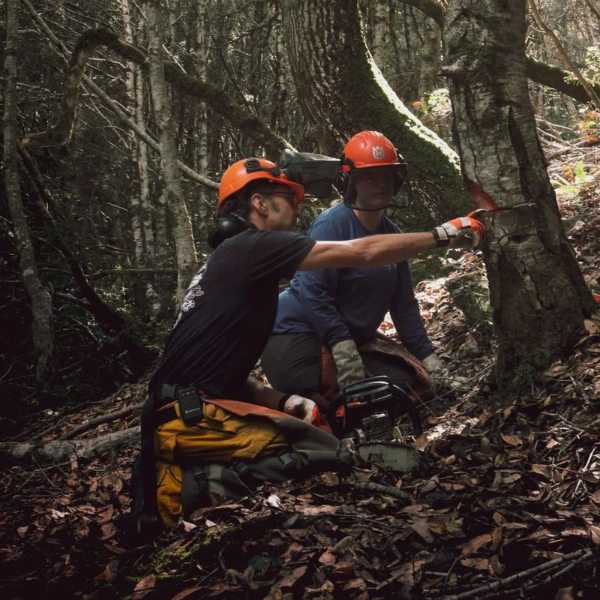
It is essential to learn how to use a chainsaw safely when tackling any DIY project. The fact that more than 3 million new chainsaws are sold annually in the United States illustrates the value of learning how to use a chainsaw. Without proper training, you put yourself and others at risk of injury or worse.
Knowing how to safely operate a chainsaw can prevent property damage, make the job go smoother, and will give you peace of mind. Here are some pointers for using a chainsaw safely.
1. Course at a Coaching Center
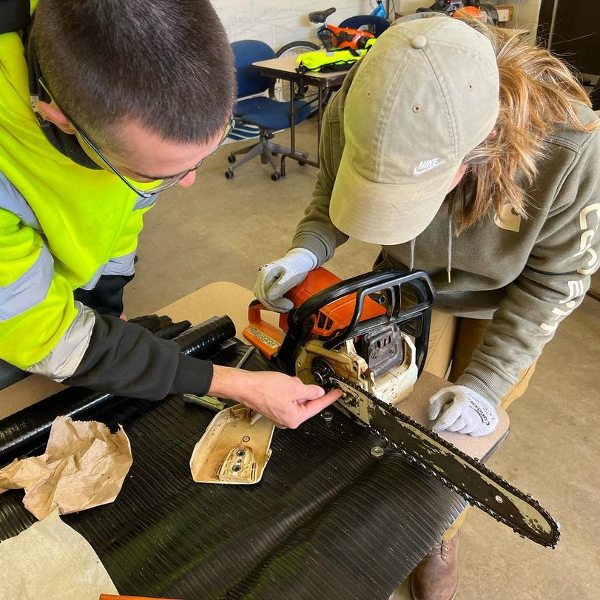
Attending a lesson at a coaching facility is the finest method to learn how to operate a chainsaw safely. Many organizations offer courses specifically designed to teach the proper techniques for chainsaw operation.
One such organization is FISTA, which offers courses for both beginners and experienced users. In addition to classroom instruction, you can practice your skills in a safe and controlled environment.
2. Ask a Friend or Relative
You might wish to get guidance from someone you know who has used a chainsaw before. Ask them to demonstrate the fundamentals of safe chainsaw use for you.
They may demonstrate the right usage methods and offer advice on how to handle and maintain the saw.
3. Watch YouTube Tutorials
If you cannot find a friend or relative to show you the ropes, you can learn how to use a chainsaw by watching YouTube tutorials.
There are many videos available that demonstrate proper chainsaw operation. You can also find videos that show how to sharpen and maintain the blades of your chainsaw.
4. Read the Manual
As a final option, you can also read the chainsaw’s instruction manual. One may operate the saw safely and efficiently by following the directions in the manual. Additionally, it will include details on upkeep and safety measures.
Before using your chainsaw for the first time, make sure to read the instruction booklet. However, you can miss certain crucial learning opportunities if you use this method and that’s not the best-advised method.
Safety Equipment Required For Chainsaws
Using a chainsaw is a great way to make quick work of woodworking projects, from cutting down trees to trimming branches.
However, it is important to know the safety equipment that is needed to ensure that you are using the chainsaw safely and correctly.
Here are some of the safety equipment you should always consider when using a chainsaw.
1. Chainsaw Chaps
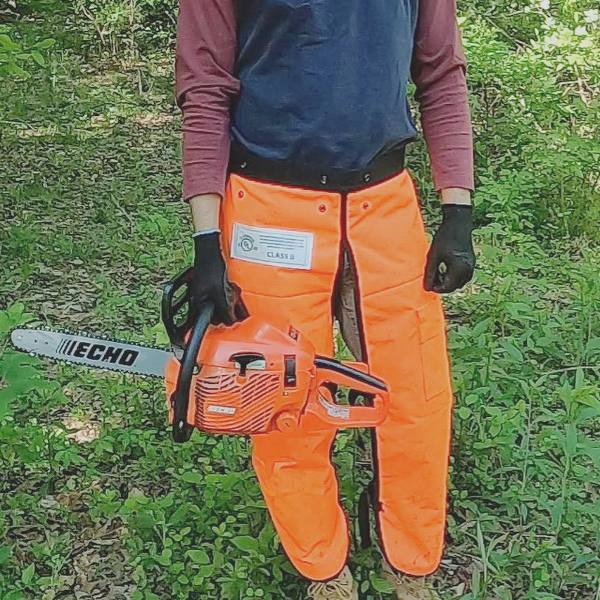
Chainsaw chaps are essential safety equipment for anyone using a chainsaw. They protect the blade of a chainsaw, which can cause serious injury or death.
They are made from a tough material that resists cutting and are usually brightly colored for improved visibility.
The chaps are designed to wrap around the legs and fit snugly, allowing the user to move freely while still providing adequate protection. The chaps also allow for ventilation, allowing the user to remain cool while working.
2. Ear protection

Chainsaws produce a loud sound, and repeated exposure can permanently impair hearing. Anyone using a chainsaw must wear ear protection to keep themselves safe.
The two most popular types of protection – ear plugs or ear muffs – both work well to muffle chainsaw noise. While the ear muffs are worn over the ear, the earplugs are placed into the ear.
Anyone using a chainsaw is advised to wear ear protection, which should be kept on at all times when the chainsaw is in operation. The safety of persons operating chainsaws can be ensured by wearing ear protection and preventing irreversible hearing loss.
3. Eye Protection
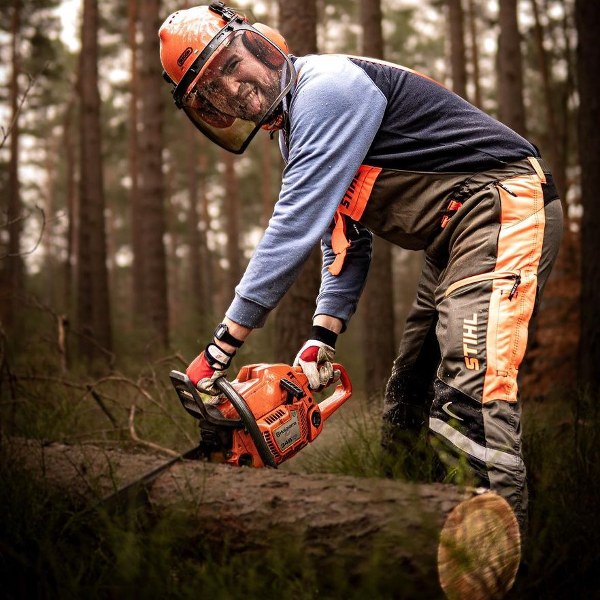
Eye protection is an important part of safety equipment when using a chainsaw. Chainsaw safety glasses protect eyes from flying debris, such as wood chips, sawdust, and other objects that may be thrown by the chainsaw as it is cutting.
Wearing protective eyewear also shields eyes from the potential for a kickback due to a dull blade, or a chain breaking or jumping off the bar. These occurrences can result in debris flying toward the operator’s face and can lead to serious eye injuries.
Protective glasses also help to protect the eyes from UV rays produced by the chainsaw, which can cause damage to the eyes and other parts of the face over time.
4. Face Protection
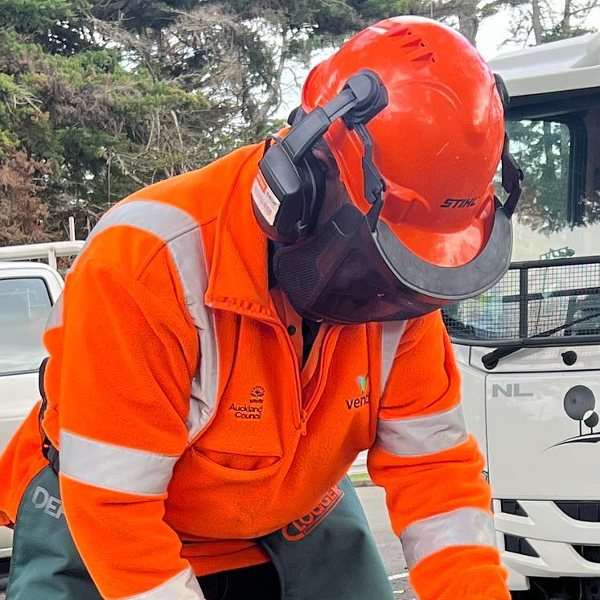
Safety equipment for chainsaws that protects the user’s face, such as safety helmets, is crucial since it guards against the risk of being injured by flying debris. Chainsaws generate a lot of flying debris, including sawdust, which can seriously hurt a person if it gets in their face or eyes.
Helmets come with face screens or visors that shield the wearer from these particles as well as a little amount of the noise the chainsaw makes.
Helmets also offer some protection from flying objects like branches or logs, which can be dangerous when using a chainsaw.
5. Hand Protection
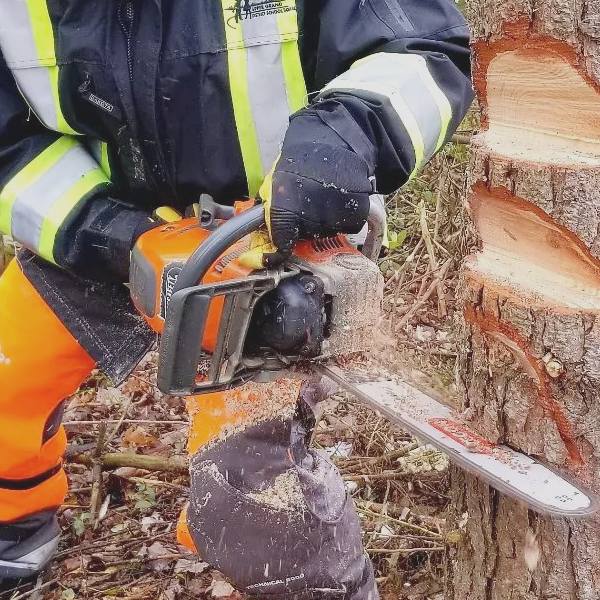
For anyone using a chainsaw, gloves are an essential piece of safety gear. They offer defense against the saw’s moving parts and jagged edges, which can seriously harm users.
Typically, the gloves are composed of a strong material like leather, Kevlar, or a mix of the two. To shield the user’s hands from the strong vibrations of the saw, they frequently include additional padding and reinforcement.
The gloves also aid the user’s grip on the chainsaw and offer some protection from the heat that the chainsaw produces.
Injuries such as cuts, scrapes, and other accidents are also largely avoided thanks to the gloves. Furthermore, they give the operator a greater grasp on the saw and enable a secure hold when operating.
6. Chainsaw Boots

Chainsaw boots are a crucial piece of chainsaw safety equipment because they shield the user’s feet and ankles from the risk of chainsaw kickback.
High-grip rubber is used in the construction of chainsaw boots to provide excellent traction and support while using a chainsaw.
Additional protection around the ankles and toes of the boots also helps to lower the possibility of lacerations and other injuries from chainsaw kickbacks.
To further protect against chainsaw kickback, the upper portion of the boot is made of robust and long-lasting material like leather.
The boots also include a reinforced toe, which helps shield the feet from the chainsaw’s razor-sharp blades.
7. Safety Chain
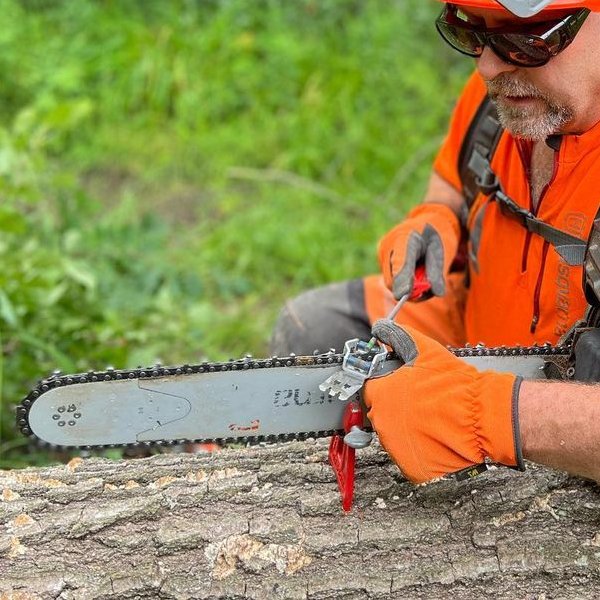
A safety chain is a critical safety component of a chainsaw. It is a metal chain that encircles the chainsaw’s front and is made to keep the chain from separating while it is in use. That serves to absorb some of the shocks from kickback, which can cause catastrophic injury and is intended to prevent the chain from being tangled or snagged.
The safety chain also aids in maintaining the chain’s tension, making operating more streamlined and lowering the possibility of kickback.
Additionally, the chain lessens the likelihood that the chain may tarnish or sustain harm from coming into contact with the ground.
By helping to keep the chain in place, tensioned, and protected, the safety chain is a key component of keeping the operator safe while using a chainsaw.
Over To You!
When chainsaws are not used properly, they can be dangerous. If not treated carefully, they can result in significant harm and even death.
Wearing protective gear when using a chainsaw and obeying safety precautions, such as never operating a chainsaw with loose clothing or jewelry, are important.
Keeping the chainsaw in good working condition requires regular maintenance. With proper use and care, chainsaws can be a useful and safe tool.
FAQs
Are electric chainsaws safer than gas chainsaws?
Yes, electric chainsaws are generally considered to be safer than gas chainsaws as they are typically less powerful, and therefore kickbacks are much easier to handle. Additionally, electric chainsaws are quieter and easier to start than gas chainsaws. However, gas chainsaws are more powerful and may be necessary for larger jobs.
What should I do if I am injured while using a chainsaw?
If you are injured while using a chainsaw, it is important to seek medical attention immediately. In addition, you should contact the manufacturer of the chainsaw and report the incident, as they may be able to provide further safety advice or assistance.
What should I do if the chain of my chainsaw becomes caught on something?
Never try to manually free your chainsaw’s chain if it becomes caught on something. Switch off the chainsaw and wait for the chain to stop spinning before attempting to free it. If the chain is still stuck, use a small stick or another tool to free it. Never attempt to free a stuck chain with your hands or any other body part.
How can I reduce the risks of using a chainsaw?
Make sure you are wearing the proper safety gear, including eye protection, hearing protection, gloves, and a hard hat. Be sure to read and understand the instructions before using the chainsaw. Keep your hands and feet away from the chain or bar at all times. Slow down when cutting and be aware of your surroundings. Make sure to keep the chainsaw in good condition by regularly cleaning and sharpening it.
Are chainsaws safe for children to use?
No, chainsaws are not safe for children to use. Children should not be allowed to operate a chainsaw due to the high risk of injury associated with its use.
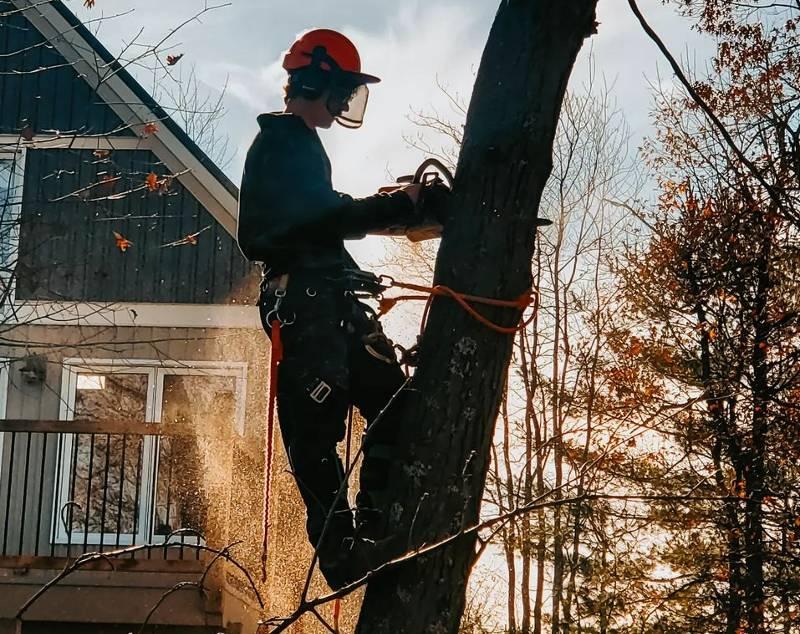
I am Senior Editor and CEO and I have been a chainsaw enthusiast for over 12 years. As a passionate chainsaw enthusiast, I have got a wealth of knowledge and experience with chainsaws, and I am constantly striving to expand my expertise and knowledge. Read More!
